Table of contents
- Honda Super Cub conversion Wide body low rider with two strokes
- Custom Cub as a lowrider
- Tires have to be round and wide
- One cylinder, two strokes, three times the displacement, four times the power
- opinion poll
- Conclusion
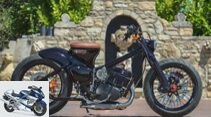
Del Hickey
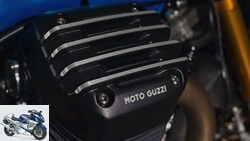



12th pictures
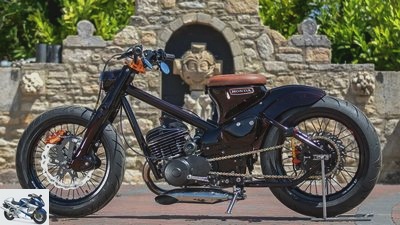
Del Hickey
1/12
For two years Brian converted a Super Cub into a hot Low Rider.
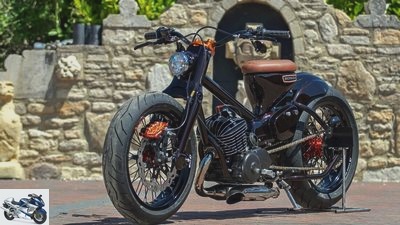
Del Hickey
2/12
The Flex has a lot to do. In the end, Brian rebuilds large parts of the frame.
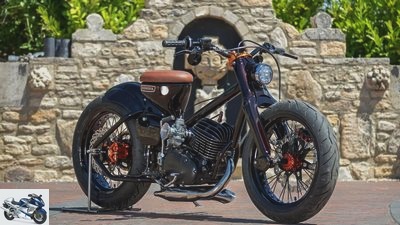
Del Hickey
3/12
The fork becomes six centimeters wider.
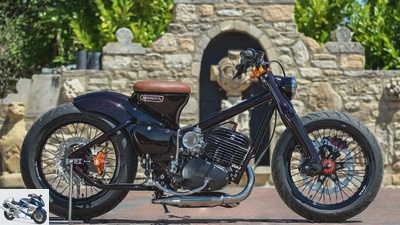
Del Hickey
4/12
The wheelbase also grows by six centimeters.
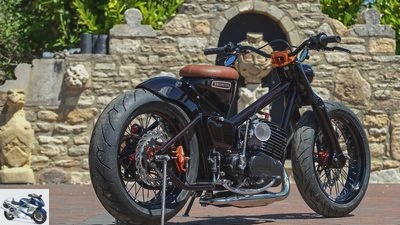
Del Hickey
5/12
The new rear suspension requires a 160 mm rear tire.
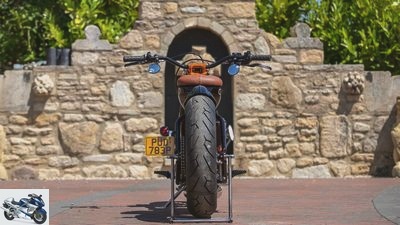
Del Hickey
6/12
It is spanned by a self-made fender that docks onto the old sheet metal construction for the tank and seat.
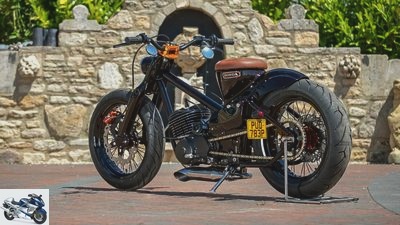
Del Hickey
7/12
Note the exciting guidance of the exhaust system.
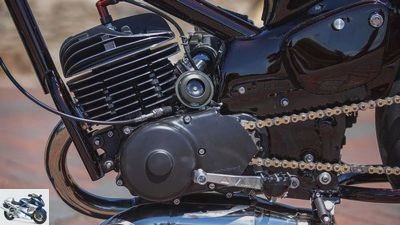
Del Hickey
8/12
In the new framework, Brian relies on the 250 two-stroke Yamaha DT 250 MX: three times the displacement, four times the performance.
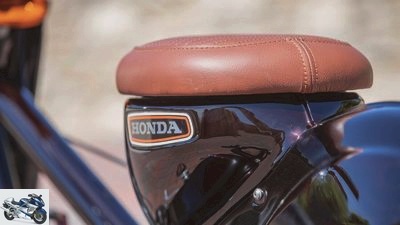
Del Hickey
9/12
The Super Cub’s tank-seat combination is original, almost.
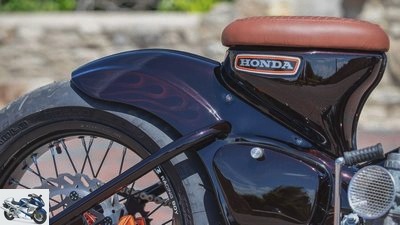
Del Hickey
10/12
Brian added the new fender for the 160 tire to them.
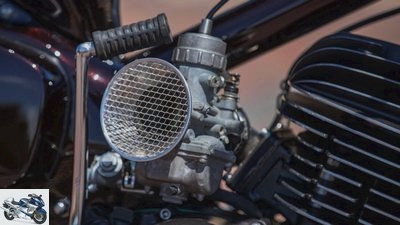
Del Hickey
11/12
Due to the open carburetor and open exhaust, the 16 hp of the DT should have increased.
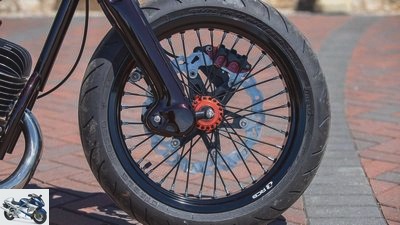
Del Hickey
12/12
The hubs of the 17-inch wheels are also from a Yamaha.
motorcycles
classic
Honda Super Cub conversion: two-stroke and 160 tires
Honda Super Cub conversion
Wide body low rider with two strokes
Honda has sold the Super Cub over 100 million times in the past 63 years. Brian sees the Honda as more than a daily commuter. He sees a lowrider with wide tires and a large two-stroke in a rigid frame.
Jens Kratschmar
06/22/2021
In this article:
- Custom Cub as a lowrider
- Tires have to be round and wide
- One cylinder, two strokes, three times the displacement, four times the power
- Conclusion
The problem: between the massive looking fork and the unique tank-rear combination of the Super Cub 70 from 1975 have a stable but low-power engine and an equally weak engine suspension. The solution: The Flex.
Custom Cub as a lowrider
As it is with the cut-off machines on scrap metal: A little more often falls away than planned. Especially with frames in pressed steel construction: the stuff is like weeds and has been connected to other important parts in the most impossible places. While Brian tears out the unloved middle section, he realizes: The swing arm has to go too. His plan to connect the fork and the rear with a drawn steel tube and also to build the downtube for the engine mount using the same material is complemented by a rigid rear suspension. Thanks to this flexible space, the new construction is not only significantly wider at the rear, but also significantly flatter at the front and a total of six centimeters longer. The fork must be adapted to this. Brian also widened the short swing construction by six centimeters.

motorcycles
Moto Guzzi Bellagio conversion
For a birthday 1,700 cubic
read more
Tires have to be round and wide
With the hubs of a Yamaha Y 125 Z he rebuilds the rims. The rims grow to 17 inches in diameter and 3.5 and 4.5 inches in width at the rear. On the motorcycle rims he mounts Pirelli tires with a width of 120 at the front and 160 at the front. Not bad for a 70 cc sling from 1975. Equally befitting for significantly larger motorcycles: four-piston caliper at the front on a 300 mm disc, biting into a 260 mm disc at the rear with simple pistons.
One cylinder, two strokes, three times the displacement, four times the power
In the new space of the frame, a slightly larger engine hangs between the old engine mount at the rear and the new downtube with fork at the front. Brian swaps the 70s single from the Honda for the 250cc single cylinder from a Yamaha DT 250 MX. The two-stroke engine already produces a good 16 hp in the standard trim. With the open carburetor and the open exhaust pipe protruding forward, a few more horses should run here.
opinion poll
What do you think of custom conversions?
Voted 3674 times
Many are beautiful, but also impassable.
Better to leave it in its original condition.
Conclusion
It took Brian two years to build this ultra-hot part from an old Super Cub C70. Greatest respect for this achievement and dedication. In the end, all changes and parts on the Low Rider cannot be counted or listed, not to mention the wasted budget. No matter what this conversion cost – it was sensibly squandered and therefore absolutely necessary.
Related articles
-
Honda CL 350 custom bike: two-stroke engine with 100 hp
Jason Stillgebouer 11 pictures Jason Stillgebouer 1/11 Drew screwed the frame of a Honda CL 350, a two-stroke from Yamaha. Jason Stillgebouer 2/11 The…
-
Conversion: single-sided swing arm for the Honda CBX
Floris Velthuis 19th pictures Floris Velthuis 1/19 Honda CBX 1000 with single-sided swing arm, Girder fork, parts of a Golf 7 and can be driven on the…
-
Concept comparison: Honda Fireblade, KTM 990 Super Duke R, Suzuki GSX-R 600, Yamaha FZ6
Gargolov motorcycles Concept comparison: Honda Fireblade, KTM 990 Super Duke R, Suzuki GSX-R 600, Yamaha FZ6 Concept comparison: Honda Fireblade, KTM 990…
-
Honda CB 900 F conversion from NCT Motorcycles
Peter Pegam / NCT Motorcycles 18th pictures 1/18 Honda with single-sided swing arm, clearly VFR 750. Or when NCT Motorcycles installs the swing arm of a…
-
Six super sports tires in a comparison test
markus-jahn.com 16 pictures markus-jahn.com 1/16 When it is wet, there is only a fine line between grip and take-off. Good skins offer a wide range of…
-
Honda Super Cub 125: With Euro 5 and pillion seat
News 2022 New motorcycle items for 2022 Honda 12th pictures Honda 1/12 Honda has revised the Super Cub 125 for model year 2022 for Europe. Honda 2/12 In…
-
Recommended tires for the Honda Crosstourer
Blacksmith accesories tire Recommended tires for the Honda Crosstourer Ten tire pairings in the test Recommended tires for the Honda Crosstourer A…
-
Used advice Honda Hornet 600-S
fact counselor Used purchase Used advice Honda Hornet 600 / S Used advice Honda Hornet 600 / S The unconventional one The trend towards the 600cc naked…
-
Yamaha Tmax conversion: custom bike based on scooters
One of a kind 7th pictures Unique 1/7 Unique from Poland made a Yamaha Tmax from 2009. One of a kind 2/7 Without a cladding, a chic aluminum frame…
-
Comparison test Ducati 1098S, Honda Fireblade, KTM 1190 RC8, Triumph Daytona 675, Yamaha YZF-R6
Jahn motorcycles Comparison test Ducati 1098S, Honda Fireblade, KTM 1190 RC8, Triumph Daytona 675, Yamaha YZF-R6 Comparison test Ducati 1098S, Honda…